Moving a shed can be a daunting task, especially if you are not familiar with the process. Shed moving is a common task for homeowners who are relocating or looking to reposition their shed on their property.
However, the cost of moving a shed can vary depending on several factors, including the distance, size, and condition of the shed. In this article, we will explore the cost of moving a shed and the factors that affect the cost.
Additionally, there are several cost factors to consider when moving a shed, including the distance of the move, the size of the shed, and the equipment required for the move. By understanding these factors, you can make an informed decision about the cost of moving your shed and plan accordingly.
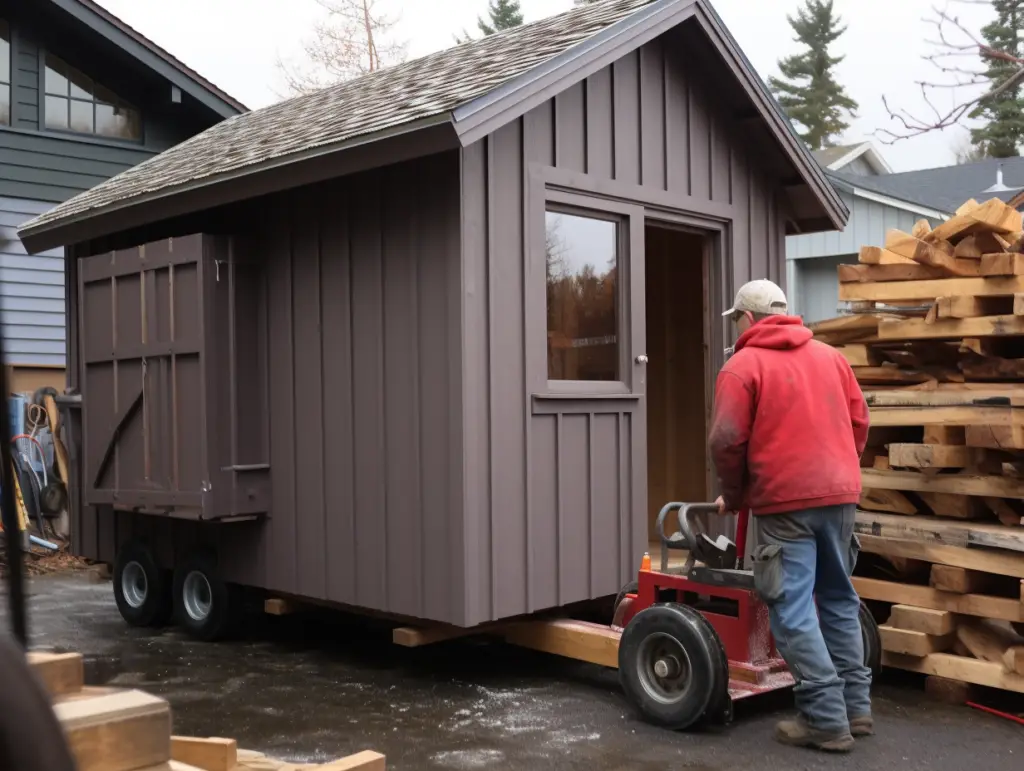
Key Takeaways
- Shed moving requires careful planning, preparation, and the right equipment to ensure that the shed is moved safely and efficiently.
- The cost of moving a shed can vary depending on several factors, including the distance, size, and condition of the shed.
- By understanding the process of shed moving and the cost factors involved, you can make an informed decision about the cost of moving your shed and plan accordingly.
Understanding Shed Moving
What is Shed Moving?
Shed moving is the process of relocating a shed from one place to another. The reasons for moving a shed can vary from person to person. Some people may want to move their shed to a different location on their property, while others may be moving to a new home and want to take their shed with them.
Shed moving is a complex process that requires careful planning and execution. It involves disassembling the shed, transporting it to the new location, and then reassembling it. The process can be time-consuming and expensive, but it is often worth it for those who want to keep their shed.
Why Move a Shed?
There are several reasons why someone might want to move a shed. One of the most common reasons is to create more space on their property. By moving the shed to a different location, they can free up space for other uses.
Another reason to move a shed is to protect it from damage. If a shed is located in an area that is prone to flooding or other natural disasters, it may be wise to move it to a safer location.
Finally, some people may want to move their shed simply because they like it and want to take it with them when they move. Sheds can be expensive, and moving them can be a cost-effective way to keep them.
Overall, shed moving is a complex process that requires careful planning and execution. Whether you are moving your shed for practical reasons or simply because you want to take it with you, it is important to hire a professional to ensure that the process goes smoothly.
Preparation for Shed Moving
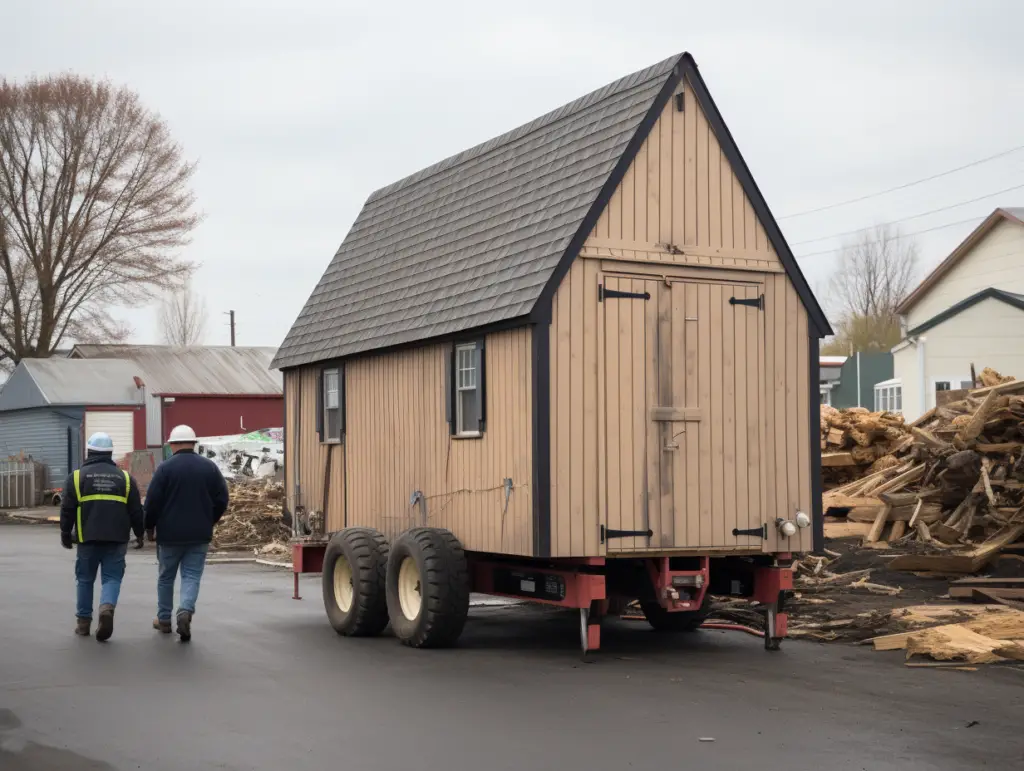
Moving a shed is a complex task that requires careful preparation. Before moving a shed, you need to assess the condition of the shed, empty it, and prepare the site. In this section, we will discuss each of these steps in detail.
Assessing the Condition
Before moving a shed, it is essential to assess its condition. Check for any structural damage, rot, or decay. If the shed is in poor condition, it may not be worth moving. Additionally, check the shed’s size and dimensions to ensure it can be moved safely.
Emptying the Shed
Before moving the shed, you need to empty it of all its contents. Remove all items, including tools, equipment, and other belongings. This will make the shed lighter and easier to move. It is also a good idea to label the items and pack them carefully to avoid damage during the move.
Preparing the Site
The site where the shed is going to be moved to should be prepared ahead of time. Ensure that the base is level and stable to prevent the shed from shifting or tipping over. If necessary, remove any obstacles, such as rocks, roots, or debris, from the site.
It is also important to check for power lines and telephone poles that may obstruct the shed’s movement. If necessary, contact your local utility company to have them temporarily moved out of the way.
In summary, preparing a shed for moving requires careful planning and execution. Assess the condition of the shed, empty it of all its contents, and prepare the site before moving the shed. By following these steps, you can ensure a safe and successful shed move.
Cost Factors of Shed Moving
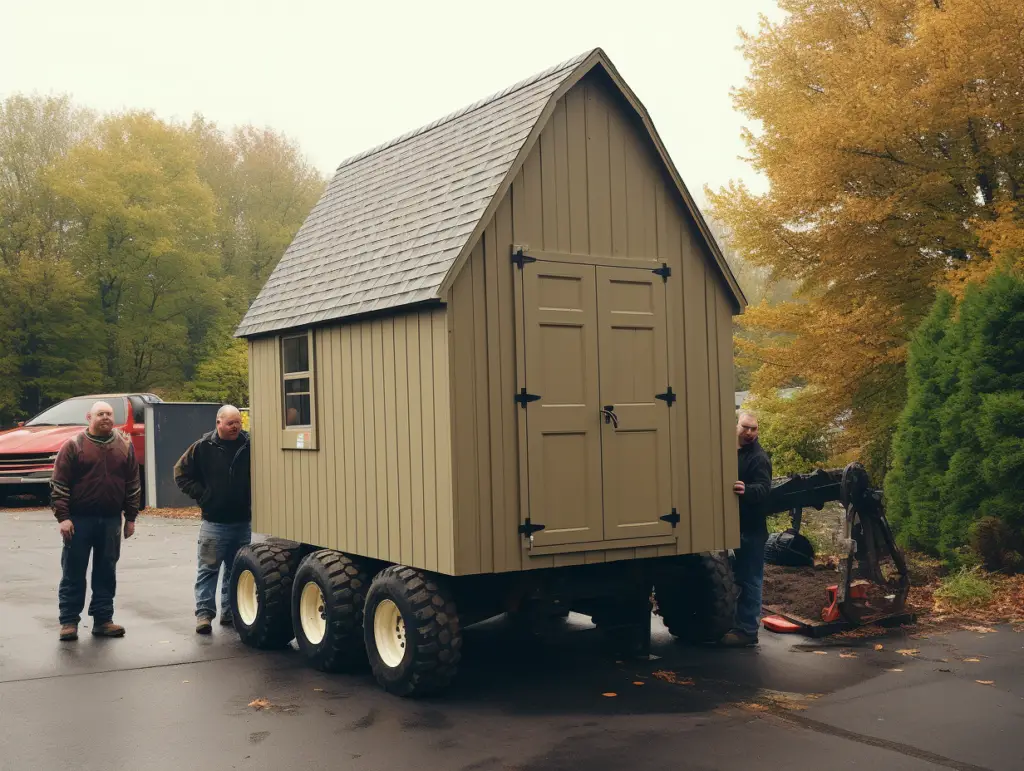
When it comes to moving a shed, various factors can affect the cost. Understanding these factors can help you estimate the total cost and plan your budget accordingly. Here are some of the most significant cost factors of shed moving:
Size and Weight
The size and weight of your shed are two of the most critical factors that can affect the cost of moving it. Larger and heavier sheds require more time, effort, and resources to move, which can increase the overall cost.
According to Upgraded Home, the average cost to move a shed is $517, and labor costs $55 per hour. Homeowners have to spend another $3.00 per mile for transportation if the distance is greater than 50 miles. Additional costs include $4 per block, $72 for skids, and $75 to empty and prepare the shed.
Distance
The distance between your old and new location is another significant factor that can affect the cost of moving your shed. The farther the distance, the higher the transportation costs. According to The Pricer, shed moving prices depend on distance, especially on longer distances, the costs can be anywhere between $1 and $5 per mile.
Condition
The age and condition of your shed can also impact the cost of moving it. If your shed is old and in poor condition, it may require more time and effort to move it safely. Moreover, if your shed is damaged or has structural issues, you may need to repair it before moving it, which can add to the overall cost.
Permits
Moving a shed requires permits in most cases, especially if you are moving it across state lines. The cost of permits can vary depending on your location and the size of your shed. Moreover, if your shed is oversized or overweight, you may need to obtain additional permits, which can increase the overall cost.
In summary, the cost of moving a shed can vary depending on various factors such as size, weight, distance, condition, and permits. Understanding these factors can help you estimate the total cost and plan your budget accordingly.
Moving Methods
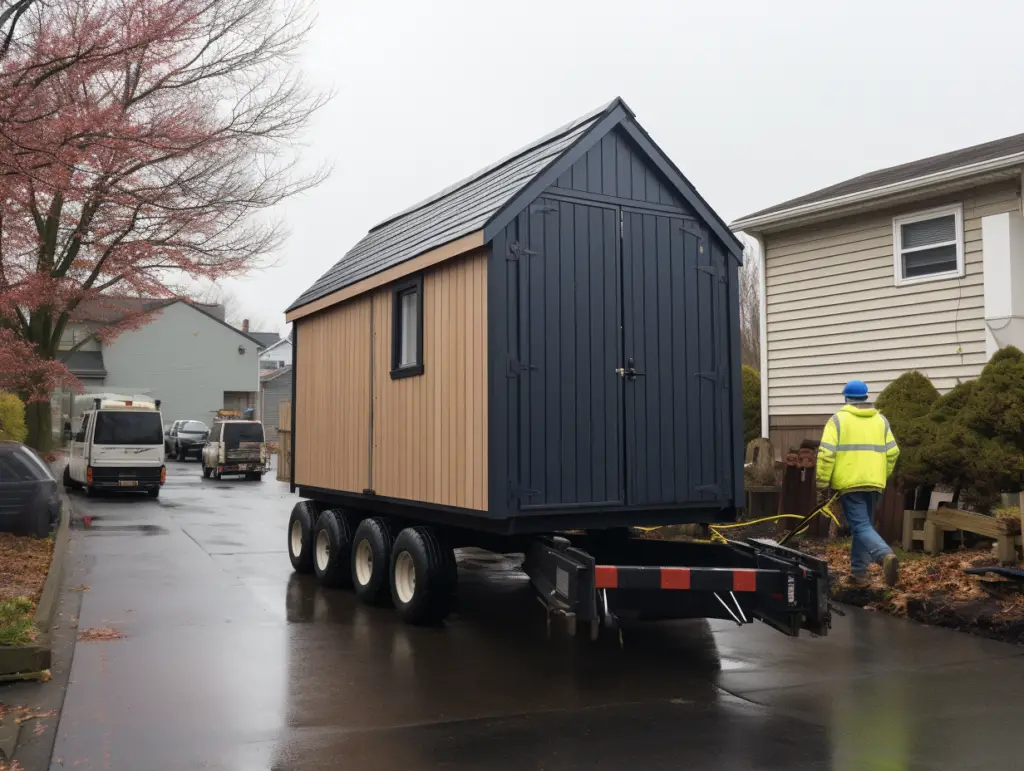
Moving a shed can be a challenging task, but there are several methods to get the job done. Depending on your budget and level of experience, you can choose between DIY shed moving or hiring professional movers.
DIY Shed Moving
If you have experience with DIY projects and access to the necessary equipment, moving a shed on your own can be a cost-effective option. Here are some steps to follow:
- Prepare the shed: Remove any items inside the shed and secure any loose parts, such as doors and windows.
- Clear the path: Remove any obstacles, such as trees, rocks, or debris, along the path where you will be moving the shed.
- Lift the shed: Use jacks or a hydraulic lift to raise the shed off the ground.
- Place the shed on rollers: Once the shed is lifted, place rollers underneath it to make it easier to move.
- Move the shed: Slowly push the shed along the path to its new location.
- Lower the shed: Once the shed is in place, use the jacks or hydraulic lift to lower it onto its new foundation.
Hiring Professional Movers
If you don’t have experience moving a shed or access to the necessary equipment, hiring professional movers may be the best option. Here are some factors to consider when hiring professional movers:
- Research: Look for reputable moving companies or shed movers in your area. Check their reviews and ratings online.
- Get quotes: Contact several moving companies or shed movers and get quotes for their services.
- Check insurance: Make sure the moving company has insurance to cover any damages that may occur during the move.
- Schedule the move: Once you have chosen a moving company, schedule the move at a convenient time for you.
- Prepare the shed: Like with DIY moving, remove any items inside the shed and secure any loose parts.
- Supervise the move: While the professionals are moving the shed, supervise the process to ensure everything goes smoothly.
Hiring professional movers can be more expensive than DIY moving, but it can also be more efficient and less stressful. Make sure to choose a reputable moving company that has experience with shed moving.
Equipment Used in Shed Moving
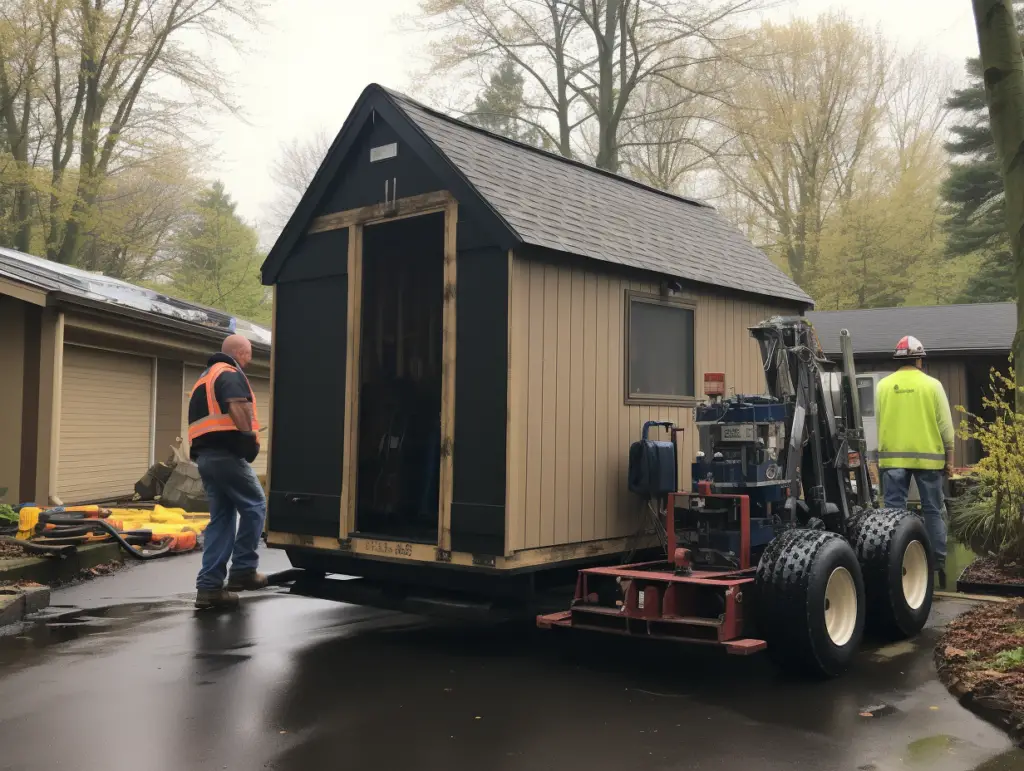
Moving a shed requires specialized equipment to ensure that it is done safely and efficiently. Shed moving equipment includes lifting and transportation equipment. Here are some of the types of equipment used in shed moving:
Lifting Equipment
Lifting equipment is used to lift the shed off the ground and onto a trailer or truck. The following are some of the lifting equipment used in shed moving:
- Skids: Skids are used to slide the shed onto the trailer or truck. They are usually made of lumber and come in different sizes depending on the size of the shed.
- Jacks: Jacks are used to lift the shed off the ground. They are usually hydraulic and come in different lift capacities.
- Winch: A winch is used to pull the shed onto the trailer or truck. It is usually powered by an electric motor or a hydraulic system.
- Crane: A crane is used to lift the shed onto a trailer or truck. It is usually used for larger sheds that cannot be lifted by jacks or winches.
Transportation Equipment
Transportation equipment is used to transport the shed from one location to another. The following are some of the transportation equipment used in shed moving:
- Trucks: Trucks are used to transport the shed from one location to another. They come in different sizes depending on the size of the shed.
- Trailers: Trailers are used to transport the shed. They come in different sizes and types depending on the size of the shed and the distance to be covered.
- Forklift: A forklift is used to load and unload the shed from the truck or trailer. It is usually used for larger sheds that cannot be lifted by jacks or winches.
- Moving Ramps: Moving ramps are used to load and unload the shed onto the truck or trailer. They are usually made of steel and come in different sizes depending on the size of the shed.
- Heavy Machinery: Heavy machinery is used to transport the shed from one location to another. It is usually used for larger sheds that cannot be transported by trucks or trailers.
In conclusion, moving a shed requires specialized equipment to ensure that it is done safely and efficiently. Shed moving equipment includes lifting and transportation equipment such as skids, jacks, winches, trucks, trailers, forklifts, moving ramps, and heavy machinery.
Process of Shed Moving

Moving a shed is a complex task that requires proper planning, tools, and equipment. The process of moving a shed involves disassembling the shed, lifting it, and transporting it to its new location. Here are the steps involved in the process of moving a shed.
Disassembling the Shed
The first step in moving a shed is to disassemble it. This involves removing the roof, windows, doors, and any other components that can be easily detached. It is important to label each component as you remove it to make it easier to reassemble the shed at its new location.
To disassemble the shed, you will need the following tools:
- Screwdrivers
- Wrenches
- Pliers
- Hammers
You will also need to remove any bolts, brackets, or other fasteners that are holding the shed together. It is important to keep these components in a safe place so that they can be used to reassemble the shed later.
Lifting the Shed
Once the shed has been disassembled, it is time to lift it. This requires heavy-duty equipment such as rollers, metal pipes, and a forklift. The shed must be lifted carefully to avoid damaging it or injuring anyone involved in the process.
Before lifting the shed, it is important to clear the area of any obstacles and to ensure that the ground is level. The shed should be lifted evenly from all sides to avoid putting too much stress on any one part.
Transporting the Shed
After the shed has been lifted, it is time to transport it to its new location. This requires a truck or trailer that is large enough to accommodate the shed and any other components that were removed during the disassembly process.
It is important to secure the shed to the truck or trailer using straps or chains to prevent it from shifting during transport. The shed should also be covered with a tarp or other protective covering to prevent damage from the elements.
In conclusion, moving a shed requires careful planning, the right tools, and heavy-duty equipment. By following the steps outlined above, you can ensure that your shed is moved safely and efficiently to its new location.
Reducing Shed Moving Costs
Moving a shed can be an expensive process, but there are ways to reduce the costs. Here are some tips to help you save money on your shed move.
Getting Quotes
The first step in reducing shed moving costs is to shop around for quotes. Contact multiple shed moving companies and ask for a detailed quote. Make sure the quote includes all of the services you need, such as disassembling, moving, and reassembling the shed. Also, ask about any additional fees, such as fuel surcharges or insurance costs.
Comparing quotes from different companies can help you find the best deal. However, don’t just go for the cheapest option. Consider the reputation and experience of the company, as well as the quality of their services. A company that offers a low quote but has a poor track record may end up costing you more in the long run.
Insurance
Insurance is an important consideration when moving a shed. Make sure the moving company you hire has liability insurance to cover any damages that may occur during the move. Additionally, consider purchasing additional insurance to protect your shed in case of damage or loss.
While insurance may add to the overall cost of the move, it can provide peace of mind and protect you from unexpected expenses. Be sure to read the insurance policy carefully and ask questions if you are unsure about anything.
By following these tips, you can reduce the cost of moving your shed without sacrificing quality or safety. Remember to get quotes from multiple companies and consider insurance options to ensure a smooth and stress-free move.
Frequently Asked Questions
What is the average cost to move a shed?
According to Upgraded Home, the average cost to move a shed is $517, with labor costs of $55 per hour. Transportation costs are an additional $3.00 per mile if the distance is greater than 50 miles. Additional costs may include $4 per block, $72 for skids, and $75 to empty and prepare the shed.
How much does it cost to move a 12×24 shed?
The cost to move a 12×24 shed will depend on several factors, including the distance of the move, the weight of the shed, and any additional services required. According to Glick Sheds, the cost to move a shed long distance is approximately $4,000. However, it is best to obtain quotes from several reputable licensed contractors to get a more accurate estimate.
What are some companies that specialize in moving sheds?
There are several companies that specialize in moving sheds, including ShedMovers, Shed Haulers, and ShedMovers LLC. It is important to research and choose a reputable and experienced company to ensure a safe and successful move.
How do professionals move sheds?
Professionals typically move sheds using specialized equipment, such as forklifts or cranes, and skids or trailers. They may also use braces or straps to secure the shed during transport. Before moving the shed, professionals will typically inspect it for any damage or structural issues and prepare it for transport by removing any doors or windows and securing loose items inside the shed.
How much does it cost to move a 10×12 shed?
The cost to move a 10×12 shed will depend on several factors, including the distance of the move, the weight of the shed, and any additional services required. According to The Pricer, shed moving prices can range from $1 to $5 per mile, with additional costs for labor and equipment.
Is it possible to move a shed without professional help?
It is possible to move a shed without professional help, but it can be a difficult and potentially dangerous task. It is important to have the proper equipment, such as a trailer or skids, and to take precautions to ensure the shed is stable and secure during transport. It is recommended to hire a professional if the shed is large or heavy, or if the move is long distance.





Leave a Reply